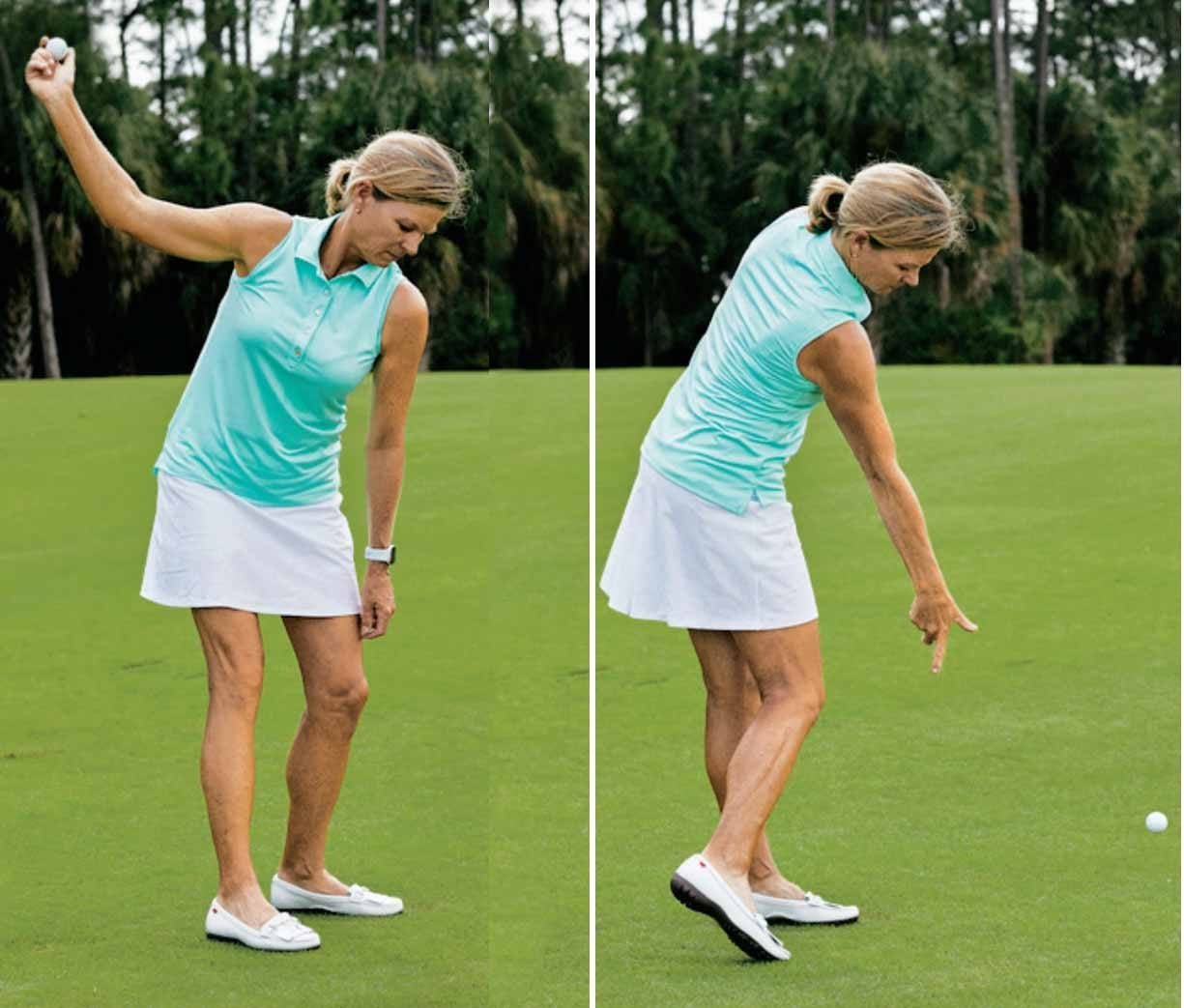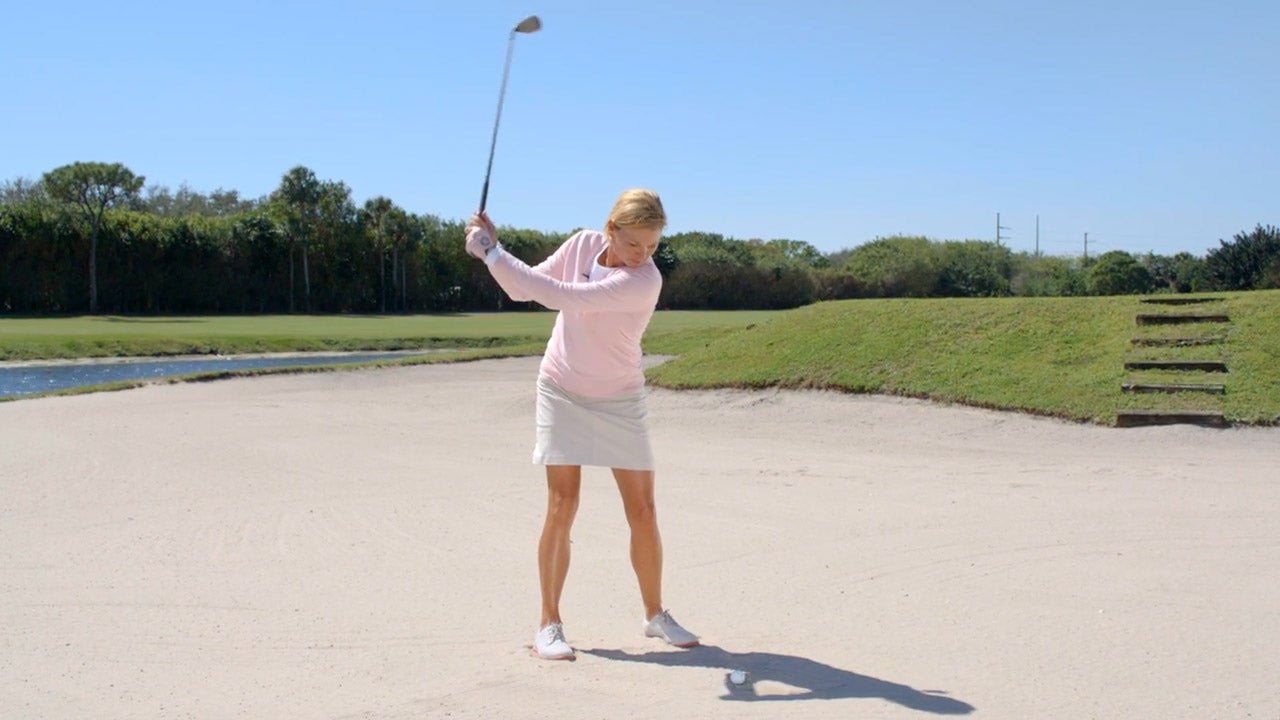10 basics that will help beginner golfers play the game better

These basics will help get your golf game on the proper footing.
GETTY IMAGES
Ilove teaching beginner golfers, and I’m so honored whenever I get to give a golfer their first lesson to learn the golf basics. Once you get a good handle on those, you’ll be able to launch the ball into the air and spark a lifelong passion for the game.
As a beginner, you’ll need to develop your skills, understanding and abilities. These are the basics to help you do that.

1. Nail the basic fundamentals
You can spot a good golfer before they even hit the golf ball. Their key fundamentals of posture, grip and stance are all good, and they usually have a very specific order which they do these things (known as a pre-shot routine) which helps them repeat these each and every time.
First, put your hands onto the golf club following the guidelines here.
Next, step into the golf ball with one leg, and bow from your hips, like this.
And finally, adjust your feet so your weight is balanced and your feet are about shoulder width apart.
Put simply: Grip the club, step and bow, then adjust your feet.
2. Understand how the ball gets into the air
One of the greatest challenges beginners face is getting the ball in the air consistently.
The basic concept is that in order to get the ball in the air, you need to hit the ground. Get into good posture, bending from the hips, and feel like your extending both arms into the ground during your swing, like you’re throwing a ball (as you see me demonstrating below).
Don’t be afraid to hit the ground on your practice swings to get this feeling. You’ll be launching beautiful shots in no time.

3. Know how far your clubs go
Even as a beginner, one of the golf basics you need to know is how far your clubs go. You may not think you’re consistent enough to know this, but you are.
Write all the clubs you have on a piece of paper, and when you hit a shot reasonably well, use an app like GolfLogix (an affiliate company of GOLF.com), a range finder like a Bushnell, or walk off the yardage yourself and write it down. These numbers will change over time, but knowing your distances will help your consistency on the course.
4. Have a reliable club from the fairway
Once you tee off and your ball is on the ground in the fairway, new golfers may have a comfort level with one club over the other — you may prefer your hybrid over a fairway wood, for instance.
The key is finding a club you’re comfortable with, and one that goes a reasonable distance to help build confidence and help you to have fun.
A great choice for a reliable fairway club might be your most lofted fairway wood, like a 7-wood. A 7-wood would still travel a reasonable distance and be more consistent than a lesser lofted option.
Find your “go to” club and build confidence and consistency.

5. Be able to hit a basic golf chip
As a beginner, you need to be able to hit a basic chip,
This shot doesn’t need to be perfect and as a newer golfer, I would not expect you to have perfect distance control. Your goal is to have a go-to shot when you’re close to the green.
For a basic golf chip: Hold the club lower on grip, with a more narrow stance, lean your weight and torso towards the target, and make a basic putting motion that brushes the grass. I would choose a pitching wedge for this shot, and practice getting comfortable with it.
6. Short game priority order
Simply knowing how to manage risk by choosing the right shot can be one of those golf basics that will help you succeed as a golfer.
The smaller the motion the less the chance for error, so remember my short game priority order:
Putt whenever you can.
Chip when you can’t putt.
Pitch (a longer, higher chip) only when you have to.
Using this pecking order will help you keep the ball in play even when you miss.

7. Know how to hit a basic bunker shot
Sand shots are some of the hardest for beginner golfers. And like we talked about earlier: Remember that to hit the ball up, you need to hit the ground. This means overriding any instinct you have to lifting the ball up, and commit to hitting the sand instead.
To help with this, dig your feet into the sand and play the ball more forward in your stance.
8. Know what equipment you need
Beginner golfers need to be prepared with the necessary tools that you’ll use on the course.
You should plan on having six to 12 golf balls in your bag, a golf glove (if you wear one) and tees and a ball marker in your pocket and ready to go.
Being ready to go when it’s your turn to hit is an important part of golf. Having all these things will help you do that.

9. Distance control in putting
Learning how to putt is one of those golf basics that is fun to learn, yet challenging.
A good, basic putting posture is to bow from your hips, have your eyes over the ball and your arms hanging below your shoulders.
After that, remember that your back stroke length controls distance. In other words, smaller strokes make the putter swing slower and larger strokes help the putter swing naturally faster. And while this may be extremely basic, it can help with the concept that stroke size controls distance and get you started.
You can use your feet to help you regulate stroke size, assuming your feet are about hip width.
For small putts, think about your putterhead going from big toe to big toe.
For medium putts, think little toe to little toe.
For large putts, aim for two-to-three inches outside each foot
Facing an extra large putt? Go six-to-seven inches outside each foot.
10. Lean rules and etiquette
Other than your skills, you need to know it’s important to fill your divots and fix any ball marks you leave behind. It is also not a bad idea to know a few of golf’s basic rules: Familiarize yourself with the official way to drop a ball, to take relief from an unplayable lie, what to do if your ball is out of bounds and what to do if you hit your ball into a hazard.



No comments:
Post a Comment